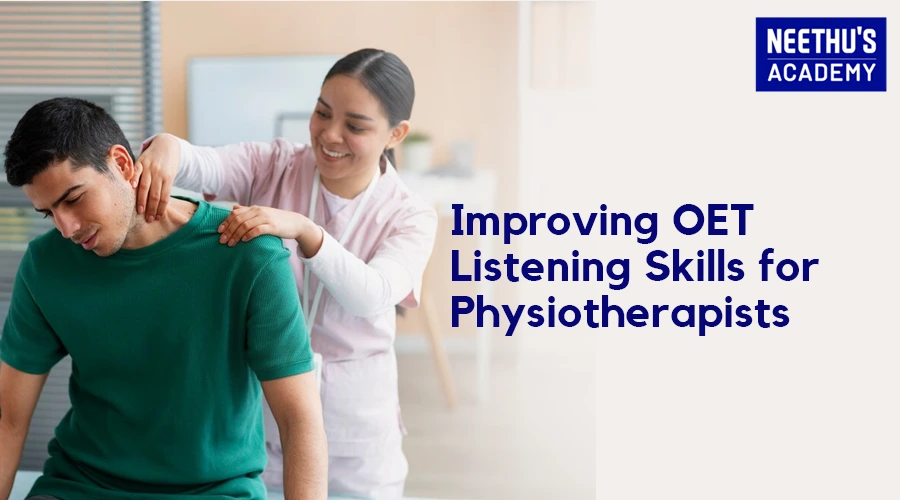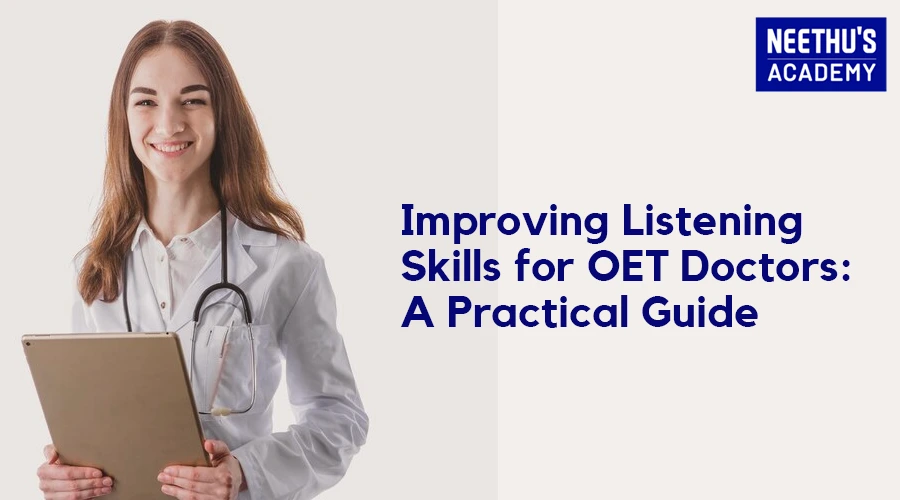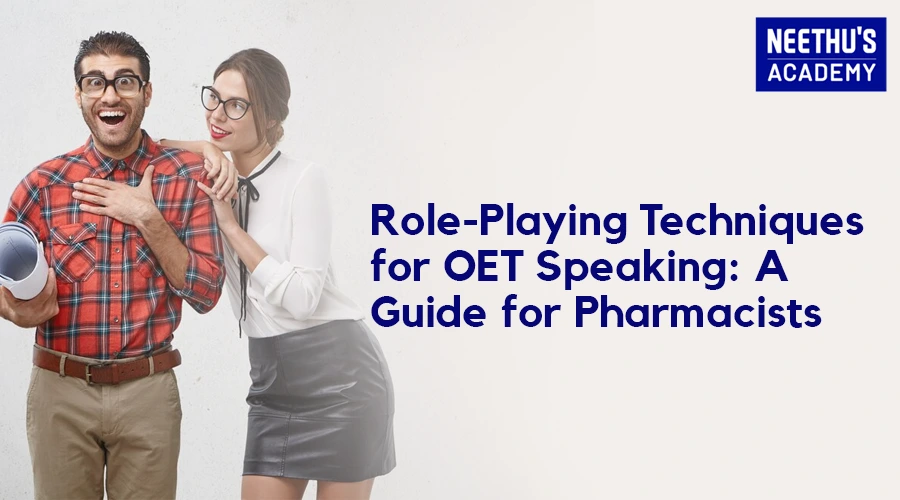OET for Pharmacists: Study Tips and Exam Format Explained
As a pharmacist, you would be eager to practice in an English-speaking country. Proving your proficiency in the English language is quite an important step for communicating with your patients, healthcare professionals, or colleagues more clearly. The Occupational English Test (OET) is well suited for healthcare professionals, including pharmacists, testing not just your language skills but also your competency to perform real-life medical situations. With a growing number of countries mandating the involvement of healthcare professionals, success in OET can unlock so many career opportunities. In this blog, we’ll walk you through the format of the OET exam for pharmacists, provide targeted study tips for the pharmacy section, and share strategies on how to overcome some common challenges.
OET Exam Format for Pharmacists
The OET exam for pharmacists is customized to the pharmacy profession so that the test reflects upon real-world scenarios and tasks you will encounter in a clinical setting. It tests your capacity to listen, read, write, and speak English in the medical context. There are four sections that make up the exam:
Listening (about 45 minutes): For this section, listen to a series of recordings related to healthcare settings such as consultations, presentations, and general discussions. You will respond to multiple-choice questions based on the content provided in the audio clips.
Reading (60 minutes): It is a set of tests designed to check your ability to understand written texts in medicine. The first part is a task on matching information, and the second and third parts consist of multiple-choice questions on medical text passages.
Writing (45 minutes): You will have to write a letter based on case notes. Such writing is often in the form of a referral letter or discharge, which would then require the communication of essential medical information succinctly and accurately to the other professionals concerned with the case.
Speaking (20 minutes): In this section, you are going to be involved in role plays specifically focused on the profession of a pharmacist. This could include giving instructions to a patient regarding medication, discussing side effects, or consulting with another health professional.
Focus on Profession-Specific Tasks
There is another aspect of OET that makes it unique. It is designed to focus on the tasks relevant to your profession. For pharmacists, this entails dealing with consultations, discussing treatment plans, handling prescriptions, and communicating with both patients and other health providers. The writing and speaking sections are heavily tailored to situations you would encounter in the day-to-day operations of a pharmacy, so the test is generally more closely related to your practice.
Role Play in the Speaking Section
The Speaking section is one of the major features of OET for pharmacists. During the role plays, you are expected to enact various situations in which the interlocutor would be either your patient or some other member of the healthcare profession. A few common types of OET roles for a pharmacist include the following:
Explaining Prescription Details: You may be instructed to explain how much of something should be taken or how and when something else is to be given.
Advising about side effects: You would need to instruct a patient on potential side effects and how to inform you of them.
Dealing with patients’ questions: A patient may question you about possible interactions of drugs or may raise the issue of apparent confusion about their treatment plan, and you need to guide them clearly.
One aspect of the speaking section in OET is that it has role-play about the exact scenarios, and through this, you practice actual communication skills within the healthcare sector.
Study Tips for the OET Pharmacy
Listening Section Tips
Familiarize yourself with medical dialogues: The Listening section usually contains doctor consultations or lectures. Listen to podcasts, audiobooks, or interviews related to the pharmaceutical world to get you accustomed to different healthcare scenarios.
Note-taking: While listening to the audio, take down all key information regarding the medicines involved, symptoms of patients, plans for treatments, etc. The more you write, the better your answers will be.
Multitasking: you’ll listen, process, and write answers simultaneously during the listening test. Also, develop multitasking ability by practicing with mock exams.
Reading Section Tips
Skimming and Scanning: Skim the reading section for an overview of what the entire passage is about. Scan for specific information such as drug dosages or treatment plans.
Read pharmaceutical texts: read articles, research papers, or even guidelines to become familiar with pharmacy-related content. It helps improve your comprehension skills and builds the right vocabulary for purposes in your job.
Time management is key: Take note of the time you spend when answering the Reading section. This will ensure that you spend the right amount of time on each of these sections in the test so that you do not get bogged down with one question.
Writing Section Tips
Understand the case notes thoroughly: Spend some time considering the case notes before writing. Identify the essential information you would like to present in your letter and write briefly and directly.
Use proper format: begin with a clear purpose, and provide relevant information about the patient’s condition, treatment, and the follow-up that is required.
Use appropriate pharmacology vocabulary: You’ll often need to use accurate language relating to drugs as well as orders for treatment. Vary your vocabulary in the note so that it sounds appropriate to healthcare practitioners who will be reading your note.
Speaking Section Tips
Practice pharmacist role-plays: The role-playing activities, presumably, would relate to the actual pharmacy settings. As an illustration, the given situation could be that the patient needs to be explained the side effects of a medicine or discussed with a physician about the patient’s condition.
Focus on clear and empathetic communication: A pharmacist’s role is not only to communicate medical information but also to do so in a way that is clear and understandable to the patient. It will require empathizing with the patient and they know what the instructions are.
Improve professional vocabulary: Properly use medical terminologies but also emphasize simplifying complex issues for patients who are not from the health sector.
Common Challenges Faced by Pharmacists in OET
Managing time effectively
Pharmacists often find it difficult to manage time effectively for both the Reading and Writing sections. It would be a good idea to divide your preparation into timed exercises, such as setting apart certain times for reading case notes, outlining letters, or answering reading comprehension questions under examination conditions.
Handling Complex Medical Terms
Another challenge is the use of complicated medical terminology. The key again is consistent exposure. Read medical journals, listen to healthcare podcasts, and engage in pharmacy-specific conversations as much as possible. The more you hear and know, the less it’s going to be intimidating during your exam.
Building Confidence for the Speaking Test
Communicating with patients is stressful, especially in an examination scenario. Practice with a study mate or in an OET coaching center to boost your confidence. Use the OET examples of pharmacist role play to simulate the test environment and reduce nervousness.
Exam Day Tips for Pharmacists
What to bring
Don’t forget to bring a photocopy of your ID, a printed copy of the confirmation email, and other writing tools as you prepare for the test. Preparation will keep you in composure.
How to Stay Calm and Focused
Deep breathing or mindfulness is also an exercise that helps to tranquilize the person, which goes a long way in reducing their anxiety level. In addition to that, it enables them to focus on what to expect.
Last-Minute Revision
Avoid last-minute cramming on the day of the exam. Instead, cram vocabulary and perhaps some light role-play scenarios that will put you in the right frame of mind.
Final thoughts
Passing the OET for pharmacists means that you are enriching essential communication skills for a pharmacy professional’s life. You should know the format of the test and use targeted study tips for yourself to approach the test confidently. Practicing role plays or polishing up your writing puts you a step closer to attaining the requisite experience to compete with real scenarios. Proper preparation and resources will bring success in OET, open further career opportunities, and help students with the ability to deliver superb care to patients. Continue to work hard and never give up!
Frequently Asked Questions





